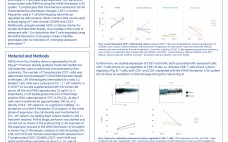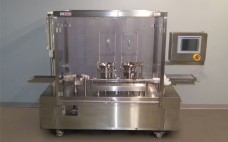The California Separation Science Society (CASSS) held a Chemistry, Manufacturing, and Controls (CMC) Strategy Forum on drug products for biological medicines in July 2012 in Bethesda, MD. Topics included novel delivery devices, challenging formulations, and combination products. This CMC Strategy Forum aimed to promote an understanding of how best to increase the speed and effectiveness of drug product and device development for both large and small companies. Participants focused on areas that improve the likelihood for regulatory success, reduce risk,…
Manufacturing
In Vitro Functional Testing Methods for Monoclonal Antibody Biosimilars
The pressure to contain rising healthcare costs — combined with the number of innovator biologic drugs coming off patent (30 licensed biological drugs by 2015) — offers huge opportunities for developers of biosimilar products. In 2011, the global market size of the biosimilars industry was around US$2.5 billion. Global demand for such products — and monoclonal antibody (MAb) biosimilars, specifically — is estimated to grow at 8–17% from 2012 to 2016 (1). The advent of biosimilars should bring more affordable…
Comparability Protocols for Biotechnological Products
Comparability has become a routine exercise throughout the life cycle of biotechnological products. According to ICH Q5E, a comparability exercise should provide analytical evidence that a product has highly similar quality attributes before and after manufacturing process changes, with no adverse impact on safety or efficacy, including immunogenicity (1). Any doubt about data from such studies could translate into unforeseen pharmacological or nonclinical studies — or worse, clinical studies. Selection of analytical methods and acceptance criteria that will be applied…
Biosimilars, Oxidative Damage, and Unwanted Immunogenicity
Concerns about the economic viability of biosimilars center on their high development cost relative to small-molecule generics, along with (and partly because of) the difficulty in demonstrating bioequivalence for these complex molecules. Immunogenicity is a particular area of increasing vigilance at both the US Food and Drug Administration (FDA) and the European Medicines Agency (EMA) (1, 2). Unwanted immunogenicity is an underlying cause of multiple deleterious effects for all protein-based therapeutics — including loss of efficacy, altered pharmacokinetics, and reduced…
Increasing Purity and Yield in Biosimilar Production
Current downstream processing strategies for recombinant proteins often require multiple chromatographic steps, which may lead to poor overall yields. Product purification can be especially difficult when a target protein displays reduced stability, forms isoforms or misprocessed variants, or needs to be purified from a complex mixture containing a high degree of contaminants. One technology that has been developed to tackle such limitations is based on custom-made chromatography matrices containing camelid-based single-domain antibody fragments. With a molecular weight of only 12–15…
Concerns, Collaboration, and Capacity
The BPI Theater is a 50-seat venue that for seven years has been located at the heart of the BioProcess Zone on the exhibition floor of the BIO International Convention. There, BPI provides attendees with four days of live presentations focusing on the latest scientific advances and business trends in biotherapeutic development and manufacturing. On Monday afternoon, 22 April 2013, Patricia Seymour of BioProcess Technology Consultants (BPTC) moderated a roundtable discussion on biosimilar development in the BPI Theater at BIO…
Biologics Have a Robust Pipeline
Earlier this year, the Pharmaceutical Research and Manufacturers of America (PhRMA) released a report titled 2013 Report: Medicines in Development – Biologics. It lists 907 biologics currently in development at “America’s biopharmaceutical research companies.” The list includes biologics targeting more than 100 diseases that either are currently in human clinical trials or are under review by the US Food and Drug Administration (FDA). Of those 907 product candidates, the most common types are monoclonal antibodies (MAbs, 338), vaccines (250), and…
T Cells Expanded in the WAVE Bioreactor™ 2/10 System Maintain a Healthy Phenotype
T cell immunotherapy often requires the expansion of a small select starting population in vitro. To achieve therapeutic doses, this population is required to undergo multiple and rapid rounds of replication. Rapid T cell expansion raises the possibility of inducing senescence or an aged phenotype, both of which are detrimental to the recipient patient. The WAVE BioreactorTM System is often used for the final expansion phase before patient infusion and we have analysed the aging characteristics of T cells that…
Small Scale Automated Vial Filling
For small scale vial filling operations the FLT features an ideal platform. With the ability to automatically fill, stopper, and cap most common vials with minimal size parts and a user friendly control system the FLT has the features big machine features in a compact package. The mobile cart and standard utility requirements the FLT can be utilized by several different users in a lab situation. The FLT can be used with a peristaltic pump, or a rolling diaphragm dosing system, both of which are available as a single use option from the Bosch PreVAS dosing system family. Utilizing an automated system reduces filling error and product loss in comparison to manual filling operations, reduced operator fatigue and improved productivity without adding headcount.
Broadening the Baseline
When the editors of BPI asked us at BPSA to put together a content-rich article on single-use issues, we were happy to do so. Our challenge was how to bring in multiple viewpoints about the growing business of single-use that would be a “quick read” for the BPI audience. The answer: an expert colloquy. Represented here are several of the most qualified industry spokespersons in single-use — all are members of BPSA and speak as directors of the alliance. Their…


